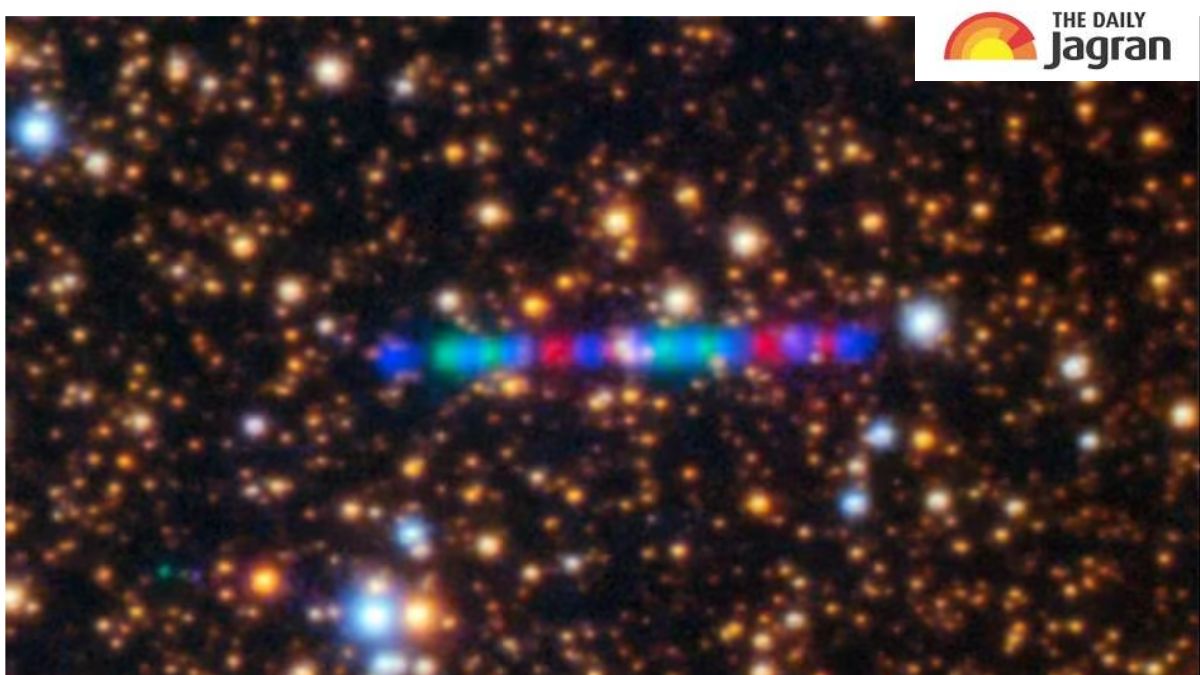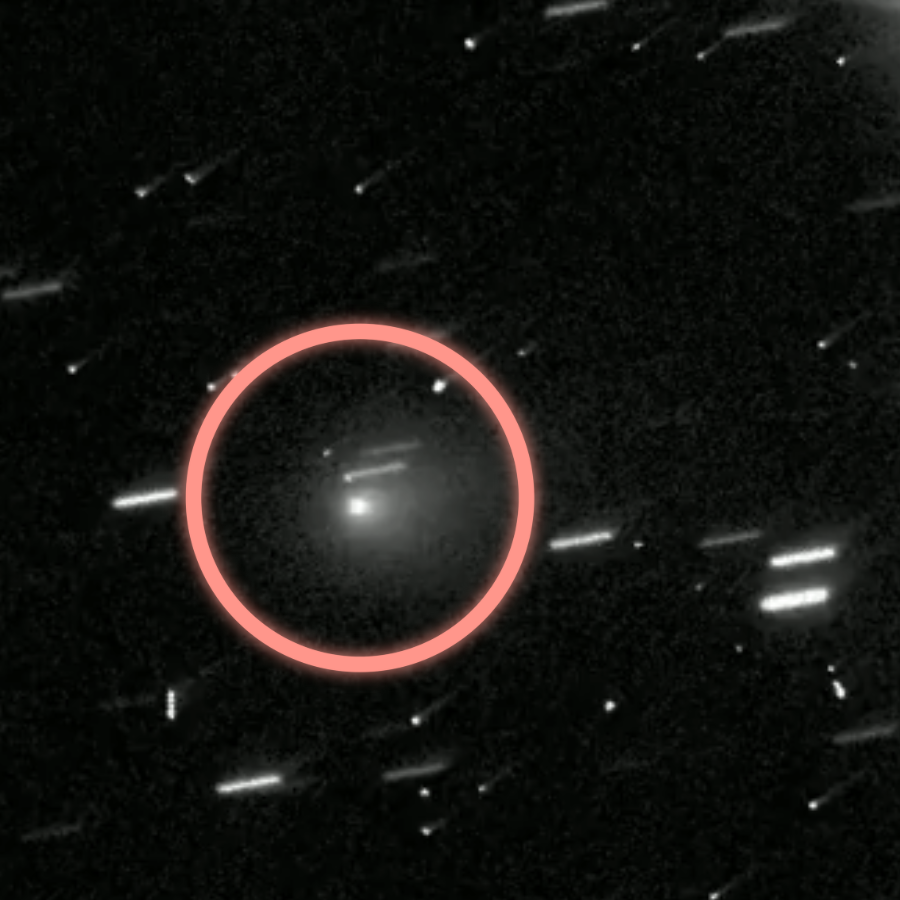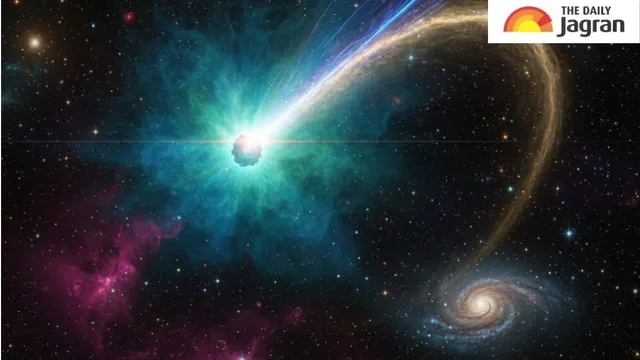- By Sarju Saran Tiwari
- Mon, 03 Nov 2025 04:02 PM (IST)
- Source:JND
Interstellar Comet 3I/ATLAS: In one of the most exciting astronomical discoveries of this decade, NASA's Neil Gehrels Swift Observatory has confirmed traces of water on the interstellar comet 3I/ATLAS, marking a significant moment for planetary science. The faint ultraviolet signal was caused by hydroxyl gas, a byproduct of the breakdown of water molecules in sunlight, as the comet passed through our solar system.
According to lead researcher Dr. Zexi Xing of Auburn University, “Every interstellar comet so far has been a surprise,” and 3I/ATLAS is proving to be no different.
What Is 3I/ATLAS?
3I/ATLAS is an interstellar comet discovered on July 1, 2025, by Hawaii’s ATLAS survey. It is the third known interstellar object from beyond our Solar System to pass through it, following ‘Oumuamua in 2017 and Borisov in 2019.
What makes this comet remarkable is its ancient origin: astronomers estimate it to be around seven billion years old, nearly twice the age of Earth.
NASA’s Swift Observatory detected hydroxyl gas (OH), a byproduct of water, around 3I/ATLAS, confirming the presence of water activity on the interstellar comet.

Some researchers note its chemistry and behaviour differ from standard solar-system comets. For example, the ratio of CO₂ to water is among the highest recorded.
3I/ATLAS is traveling on a hyperbolic path at a speed of more than 58 km/s, 3I/ATLAS came from another star system and will eventually leave our solar system forever, giving scientists a unique glimpse into the chemistry of distant worlds.
The Water Breakthrough: Clues to Life’s Origins
Ultraviolet flashes from NASA's observatory provided the first chemical evidence of water activity on an interstellar comet at such a great distance from the Sun. Even more intriguing was the fact that the comet was losing approximately 40 kilograms of water every second, even though it was so far from the Sun that ice doesn't normally evaporate.

(Image credit: NASA/ ESA/Hubble)
This shows that the icy particles in 3I/ATLAS are reacting in ways we've never seen before," said study co-author Professor Dennis Bodewits. "This is rewriting our understanding of comet behavior.
Is 3I/ATLAS Clearly Visible From Earth?
According to NASA data, 3I/ATLAS will not be visible to the naked eye. A medium-to-large telescope will be required to see it. It reached its closest approach to the Sun (called perihelion) in late October 2025.
After this, it will be visible in the sky before dawn in early November, and those with the equipment will be able to see it from Earth on the eastern horizon before sunrise. Due to its distance and brightness, it remains faint.
Thus, despite being visible, it is not visible to the average person looking at the sky with the naked eye.
Is 3I/ATLAS Really Going To Hit Earth?
In public discussion, some speculate that if an object of 3I/ATLAS's size and speed were to collide with Earth, it could cause significant devastation. For example, Elon Musk's comments suggest that it could "wipe out a continent... maybe even worse."
However, official scientific assessments from NASA and other monitoring agencies indicate that 3I/ATLAS poses no risk of hitting Earth.
Its path keeps it safely away. Therefore, while hypothetically something larger could cause significant damage, there is no evidence that 3I/ATLAS will.
What Information Might We Gain from Studying 3I/ATLAS?
As 3I/ATLAS exits our inner solar system, it will continue to be tracked by telescopes and possibly spacecraft instruments. Analysis of its composition, size, tail behavior, and path will help scientists understand the origins of objects outside our solar system.
The mission and observatory could collect data that could transform our understanding of comet formation, star system dynamics, and interstellar material.

